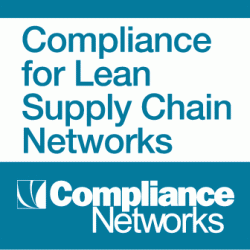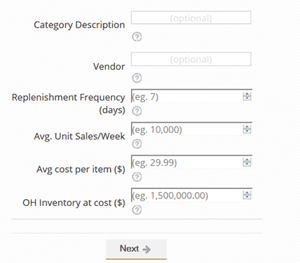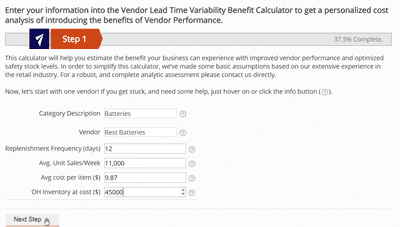Lead Times, Out-of-Stocks and Inventory
Well, I can go at this column a couple of different ways. My attempt is to connect lead-time variability, out-of-stocks, inventory performance and more.
I have been chasing this for awhile now, starting with my quest last year for a Unified Theory of Out-of-Stocks - a mission certainly not yet complete.
The term OOS usually is used in a retail context, though everyone has out-of-stock/service issues of one kind or another. But I am going to focus on the retail variety here.
| GILMORE SAYS: |
"If you can quantify lead time variability, you can make more intelligent sourcing decisions, and if you can reduce that variability, you can lower inventories and keep the same service levels."
WHAT DO YOU SAY?
Send us your
Feedback here
|
The topic has been much studied in a sense in the retail sector, though the focus of the most well-known studies have primarily been related to grocery/mass merchants and the consumer packaged goods sector.
And that is one of the big issues here - the out-of-stock problem varies in many aspects - including the impact on lost sales - depending on what retail sector and product categories you are in. Not having a given size of a $50 pair of pants has a lot more financial impact than being temporarily out of a certain kind of canned soup.
And the factors causing OOSs are myriad and complex - which of course is why the problems persist.
Over the last couple of years, Walmart's former head of US store operations Bill Simon was rather famously heard complaining at store managers meetings about the OOS problem at the retail giant, saying one time there was an opportunity to increase revenues several billion dollars annually from improving the OOS situation.
Before that, he had said (paraphrasing): "We can't keep our shelves stocked and it's getting worse." Walmart was said to have created an executive level position and filled it with an outsider just to tackle the OOS challenge. All this was likely a factor in Simon's departure.
Factors impacting OOS include ordering patterns, volatile demand, safety stock and service policies, the plague of dealing with slow movers, in-store inventory accuracy, in-store logistics, lack of visibility - and vendor performance.
It is that last one I have been looking at of late. While a lot of the research has dealt with in-store execution issue, I feel like the vendor side of things - in terms of lead times and fill rates - has not been well enough examined.
Last year, the head of supply chain planning for a major US grocery chain did a presentation on the integrated inventory planning and execution process and tools the chain was rolling out - one of the most comprehensive efforts and visions I have seen.
At the end of the presentation, someone in the audience asked him: so where are the risks given this great program?
Without batting an eye, he shot back: "Vendor performance."
In other words, in the extremely leaned out, technology-driven new approach, the biggest risk now became vendor variability, not internal performance.
Of course, variability was one of Art Mesher's "3 Vs of Supply Chain," described in one of if not the most famous analyst research notes of all time back in the late 1990s. It is the bane of Lean supply chain performance, and accounts for all sorts of woes.
In consumer goods to retail, you have two primary areas of potential vendor variability: lead time and fill rates. Those two metrics are important both in absolute terms (how long is the lead time and what is the fill rate), but even more so with regard to variability, since mediocre but consistent vendor performance could be dealt with in other ways. It's why "slow steaming" in the ocean container shipping sector on its own is not such a big problem - slow but consistent.
I have also come to this basic but important realization (perhaps being the last to know):
For short lead-time supply chains, it is fill rate that matters - lead time variability is generally low
For long lead time supply chains, it is lead time variability that matters more, and in fact the lead time variability often is caused by vendors working later to fill the order completely.
These aren't universal statements, but largely accurate I believe.
One thing that has amazed me and many others as well over the past few years is how little information nearly all companies have about lead time variability. Chris Caplice and MIT had a devil of a time a couple of years ago getting data from just a few companies on their lead times and variance for a study on containers shipments into the US, as just one of many examples I have heard in the academic realm.
Also a couple of years ago, I was at a small conference where an international logistics manager for a very large retailer basically said they had little or no information on lead time variability in product coming from offshore. Merchants/buyers were given lead time ranges for specific vendor-DC combos - say 24-26 days - which they used as a guide for when to place POs.
But of course, such a range does not consider variability. So either you ignore it, and risk out-of-stocks, or you qualitatively recognize it, and order outside the state range - maybe 30 or 35 days - to protect against the variances from the average.
But if you can quantify lead time variability, you can make more intelligent sourcing decisions, and if you can reduce that variability, you can lower inventories and keep the same service levels.
On the manufacturing side, such lead time variance is often addressed through "six sigma" type programs, and possibly supplier segmentation strategies.
On the consumer goods to retail side, it is generally...less structured. The goal of reducing lead time (and fill rate) variance just isn't as pressing. Maybe it is because it is hard to quantify the opportunity.
On a videocast last year, Mark Krupnik of retail technology vendor Retalon demonstrated using actual data how a $3 billion dollar specialty retailer had the opportunity to reduce its current inventory levels by $150-300 million, based on reductions in lead time and fill rate variability it had already achieved working with Compliance Networks on vendor management, but had not yet really acted on from an inventory perspective.
I then got the bright idea that beyond just this one-off analysis, we should create a tool that allows retailers and manufacturers to see for themselves what the impact can be.
And thus, the new "Lead-Time Variability and Inventory Calculator" was born and is released by SCDigest here today. You enter in some basic data about lead times, variance, on-hand inventory, etc., and it comes back and calculates how much inventory could potentially be reduced (if the right steps are taken) if lead time variance is reduced by increments of 10 to 50%.
Screen capture of page 1 of the calculator is below: |













